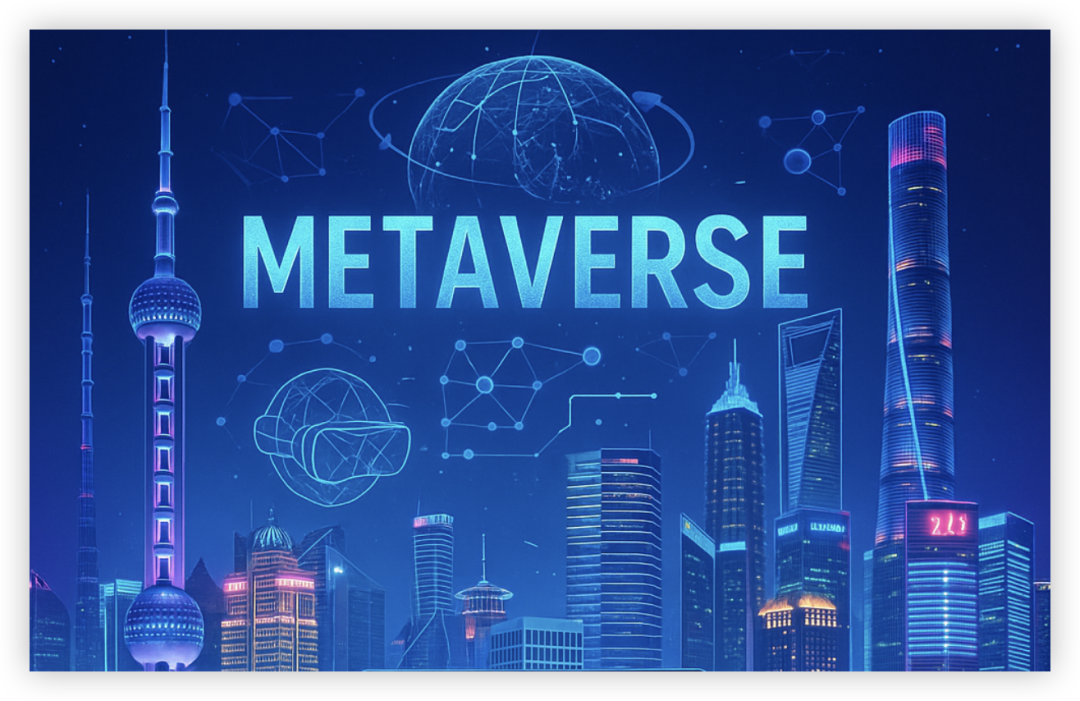Shanghai's 'Challenge List' Ignites Metaverse in 2025, Who's Behind the Scenes?

In Shanghai, there's never a shortage of testing grounds for new terms - from AI large models to smart IoT, every move sets trends. Recently, Shanghai's "Challenge List" initiative, which sounds overly bureaucratic, has also sparked heated discussion in tech circles: it might point to the starting point of metaverse moving from concept to practical application.
The metaverse is not a "virtual story," but a practice of deep integration between technology and industry. Shanghai's policy requires us to see clearly: scenarios with "technology stacking" and "multi-domain coordination" capabilities are the breakthrough points for the future.
If you walk on Shanghai streets on some afternoon in 2025, you might see virtual meetings complementing real cases on factory displays; or at the airport, travelers experiencing customized immersive journeys through the metaverse - these scenes are no longer science fiction settings, but directions that Shanghai's "Challenge List" plan is trying to implement. Five government agencies are working together, attempting to break the metaverse narrative dominated by Microsoft, Apple, or Meta, shifting technology from "eye-catching" to "grounded" real intervention power. The policy's core creed has been revealed: Don't just create single VR scenarios, try automated solutions combining multiple technologies.
Three hard-core requirements behind this cannot be ignored. First, is technology integration - if you only want to get by with an AR/VR extended reality device, you might not even get an entry ticket to this policy feast. Because the high-level coordination of artificial intelligence, digital twins, and perceptual interaction technologies is the magic key to driving industry transformation. Second, is industry-driven - whether in manufacturing, healthcare, education, or urban governance, the entire "action plan" almost provides a replicable system solution template. Third, is ecosystem building - this time the government encourages large enterprises to take the lead, but small enterprises are not just supporting roles, but enter the ecosystem loop as collaborative partners. The metaverse's "threshold" is being dismantled, returning from "high-end" to "grounded" life and industry.
In an era where speed is everything, having ideas alone is not enough. Resource integration has become the core weapon of the battlefield - if university algorithms, hospital clinical experience, and communication enterprise infrastructure don't break through barriers, they can only end up like screws stuck in business blind spots. The third direction's joining, the "Challenge List" trying to introduce broad participation mechanisms, to some extent makes the project itself a testing ground for industry chain integration. And the threshold setting for participants also shows that the government is not simply applying for a "heavyweight list," but needs enterprises with genuine technology + resources + security triple certification that can be implemented.
All applicants can log in to the "Shanghai Metaverse Major Application Scenarios 'Challenge List' Scenario Application" platform (http://paveimc.emcbidding.com/form/index.html) before June 30, 2025, to submit applications and upload required materials.
The deadline for this "Challenge List" is set for June 30, 2025. On the surface, it's a node, but behind it lies a complete task rhythm: 2024's initial trial, 2025's verification, replication, and promotion. Whoever can transform "virtual style" into "scenario necessity" during this period will get the first bite of the policy support cake. Like Stephen Chow's "Dragon" series, this challenge is essentially an attempt to find "metaverse behind-the-scenes heroes."
Conclusion
Everyone wants to know, does the metaverse have a future? Shanghai's move is not just making a call, but also laying out a "truly usable" framework. Rather than saying this is the government's attempt at technology, it's more about letting the industry witness the first step of the metaverse moving from "technology experiment" to "reality connection."
The stage lights are set up, the audience is seated, now the question is, who can break through the "technology islands" to perform truly moving roles? Perhaps, we are witnessing a node in the 2025 metaverse industry implementation - not reflecting reality in virtual, but making virtual serve reality.
分享文章
3篇相关文章
Disneyland Moves Into Fortnite: Is This the Start of the Metaverse?
2025-11-06
Disney and Epic Games launch 'Disneyland Game Rush' inside Fortnite. It’s more than a crossover—it’s an early exploration of virtual theme parks and the metaverse’s future form.
Toyota City Enters the Metaverse Fast Lane: Partnering with Giants to Build a New Model for Future Cities!
2025-11-03
Toyota City partners with Cluster and TOYOTA GAZOO Racing to explore new urban development models in the metaverse. This isn't just a tech showcase—it's a future city testbed that inspires youth participation and connects reality with virtual worlds!
Arrival Space: Bringing Reality to the Metaverse with 3D Scanning
2025-10-23
Arrival Space, a new metaverse platform built on 3DGS, brings ultra‑high‑fidelity 3D‑scanned reality into virtual space. No app required—experience unprecedented realism right in your browser. It’s not just a tech leap, but a chance for everyone to create.